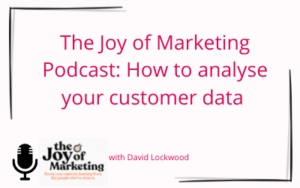In our last post, we discussed the trends that multi-channel retailers are seeing as we approach an uncharted Black Friday and festive shopping season. But how should brands respond to these trends?
Here, our panel of UK multi-channel retailers share their tips on how to future-proof your business against shifting consumer spend, behaviour and expectations to take advantage of AW20.
1. Make the most of your marketing budget
Lockdown rules are already beginning to impact how consumers are thinking about and engaging in peak season shopping. To keep up with your customers, you’ll need to make the best use of your marketing budget in the following ways:
Expect the unexpected: make sure you’re taking the opportunities when they come to you, and that you’re looking at channel performance – particularly when channels are overperforming – to understand if the sales from each channel are truly incremental and you are getting value from your marketing spend. Also, consider how long that overperformance is likely to continue.
Build agility into all of your marketing schedules and marketing playbacks. Prepare messages now to plan for different client service issues, to prevent a last-minute scramble to tailor the message.
Remain open to all channels to complement your marketing campaign. Many brands are reporting that previously underperforming channels, such as off the page ads, are working really well this season. If your usual channel mix is performing above expectation, now could be the time to test some new activity to learn for the peak season in 2021.
Build up a contingency marketing fund in preparation for any sudden or unexpected changes. Many multi-channel retailers are making the conscious decision to hold back some of their marketing budget now, in case they need to spend more to achieve the level of demand over the peak season that they have forecast. Or if trade is strong and stock is running low, the budget can be saved for next season.
2. Make the most of your stock
For those with longer lead times, who rely on imports from China, Peru, Turkey or even Europe, predicting when and how much stock to order in before the peak season is tricky at the best of times. For some retailers, who realise they have a finite amount of stock to last until the end of the year, the intention now is to be much less generous with offers during Black Friday and the run-up to Christmas, or even, to test what happens if they don’t run an offer at all.
Even if you have reached the decision not to overly market your products this peak season, this doesn’t mean that your marketing strategy is redundant. In fact, it’s crucial to get your marketing message right at this point. If you’re not discounting your stock, you’ll need to create a desire around your brand to make it stand out above the rest, such as the Marks & Spencer “this is not just any” food campaign.
In addition, as your stock begins to run low, you’ll need to be ready to send timely messages to customers to warn them to ‘buy early to avoid disappointment’, which has the added benefit of rekindling the interest of otherwise-distracted customers.
3. Underpromise in order to overdeliver
As we described in our recent article, delivery networks have come under increasing pressure over the past 12 months. According to many retailers, delivery is often the one aspect they can’t control as much as they would like to, and even when they manage to secure additional slots or vehicles from one of their couriers, it can often be difficult to get those deliveries expedited.
And with lockdown restrictions predicted to be in place until next year, it’s up to retailers to be proactive with their communication strategy now, in order to prepare customers for the fact that delivery may not be as quick as it once was. One way of achieving this is to practice caution when it comes to customer delivery options and follow the mantra: “underpromise to overdeliver”. For instance, quote your customers 5-7 days in the run-up to Christmas. Then, if you’re able to deliver the next day, or even within three days, not only will you have saved your customer service centre from a whole host of complaints, but your customers will be super-impressed by your service and far more likely to come back for more.
4. Foster strong relationships with couriers
Especially during these times, as carrier networks strive to meet demand, the relationship between multi-channel retailers and their delivery account manager is really important. Given many retailers are reporting a finite volume of courier resource at the moment, it’s advisable to err on the side of caution when sending through estimates – i.e. keep on the high side in terms of daily fleets required. Aside from this, it’s also important that you remain in close contact with your account manager at all times during the peak season, advising them of any unexpected fluctuations, cancellations, or predicted changes to requirements. Nurturing the relationship and building trust at this point means you’re much more likely to be given first refusal when vehicles become available, so that you don’t miss out to the next-best brand.
So remember: remain agile with your marketing, keep an eye on your stock, keep customers in the loop, and befriend your delivery drivers. With these four things in mind, this peak season could be your best yet.




